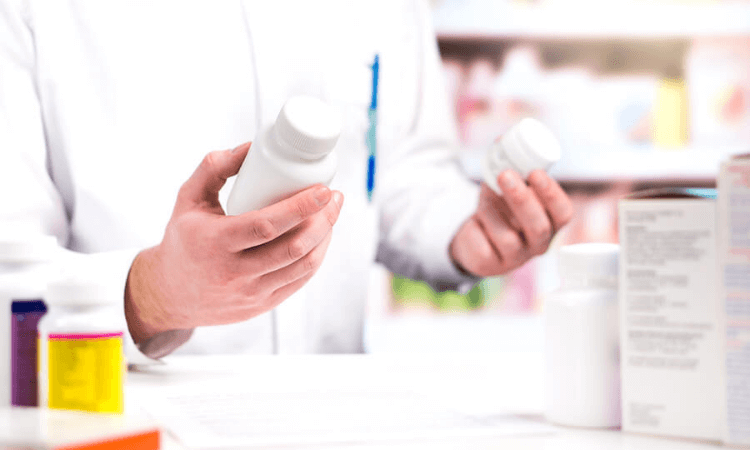
Suboxone vs. Methadone – Methadone is a synthetic, full opioid agonist and a prescription drug that was introduced in 1947, and since that time it has been commonly used for opioid replacement therapy among those addicted to more powerful opioids, such as heroin. Despite having success in addiction treatment, over the years, a darker side of methadone use has come to light. An increasing number of people have found themselves addicted to the same drug originally intended to help them manage their substance abuse problem.
Following this response to the growing danger of methadone abuse, in 2002, the British drug company Reckitt Benckiser released a drug known as Suboxone. This prescription medication includes a combination of buprenorphine and naloxone and was initially marketed as a potential replacement for methadone.
As a partial opioid agonist, many experts contended that Suboxone could offer individuals the same benefits as methadone but without the high potential for misuse and addiction. The idea was compelling, and now after more than a decade of research, scientists have been able to examine and compare the benefits and drawbacks of both Suboxone and methadone.
Benefits of Methadone
For decades, methadone maintenance therapy has been a common practice in addiction treatment facilities in the U.S. and abroad. Methadone is very effective at providing relief to people struggling with severe withdrawal symptoms related to addiction to heroin and other narcotics.
The effects of methadone are progressive and mild, which makes the drug a safer substitution for opioids of abuse during addiction treatment. Frankly, the results speak for themselves. Because methadone attaches to opioid receptor sites in the brain, users don’t experience cravings for other opioids, such as heroin or prescription painkillers. Also, the uncomfortable withdrawal symptoms associated with detoxes, such as nausea, vomiting, and other flu-like symptoms, are minimized.
And because withdrawal is managed, people in recovery are much better able to focus on the therapeutic aspects of addiction treatment and begin to address the underlying issues that led to their abuse of opioids. Over time, supervising doctors slowly taper methadone dosages, gradually weaning patients with the ultimate goal of total abstinence from all substances. That said, some patients remain on methadone for an indefinite period.
Methadone Side Effects
As with any drug, there are side effects associated with the use of methadone. These can range from mild, such as dry mouth and lightheadedness, to more severe, such as impaired respiratory function.
Side effects may include the following:
- Drowsiness
- Sexual problems
- Seizures
- Gastrointestinal distress
- Irregular heartbeat (arrhythmia)
- Depressed respiratory function
There are also several risks associated with the long-term use of methadone. Research has found that prolonged methadone use can result in cholestatic pattern liver injury and reduced attention span. Additional evidence suggests that long-term use could escalate into abuse, possibly leading users back into the same downward spiral of addiction they were initially trying to escape.

Potential for Abuse
Methadone is a full opioid agonist, meaning that the drug attaches to opioid receptors throughout the central nervous system and activates them, producing a chemical reaction that can contribute to dependence. Indeed, methadone is classified as a Schedule II substance in the U.S., indicating that it has a medically accepted purpose but also a high potential for abuse.
The ugly side of methadone has gained much attention in the 21st century. The Centers for Disease Control and Prevention (CDC) reported a 22% average increase in methadone-related fatalities each year between 2002-2006, and that number only fell an average of 6% per year from 2006-2014.
Recent estimates state that methadone abuse and overdose account for as many as 5,000 deaths each year. Although methadone may have saved the lives of many people, it appears to be tremendously dangerous for many others.
Benefits of Suboxone
Like methadone, Suboxone is also a synthetic opioid. Unlike its predecessor, however, this drug is made with 80% buprenorphine, a partial opioid agonist, and 20% naloxone, a medication used to block the effects of opioids. When someone takes Suboxone, buprenorphine attaches to receptors in the brain and activates them only slightly, providing relief from withdrawal symptoms while naloxone blocks the opioid’s effect, preventing the person from experiencing a high.
Research has suggested that Suboxone has had a very positive effect on the lives of people in addiction recovery. The Journal of Community Hospital Internal Medicine Perspectives published a study revealing that Suboxone treatment was associated with 45% fewer emergency department visits among test subjects. It is believed that Suboxone was fundamental in preventing these persons in engaging in opioid abuse.
Suboxone Side Effects
Neither buprenorphine nor naloxone is entirely free from side effects, but the effects associated with Suboxone tend to be relatively mild and primarily physical.
Common side effects of taking Suboxone include the following:
- Headache
- Dizziness
- Insomnia
- Nausea and vomiting
- Numbness, especially around the mouth
- Trouble concentrating
In rare cases, Suboxone can produce a more severe response. A 2008 article published in the American Journal of Emergency Medicine detailed a case in which a dose of Suboxone resulted in the onset of serotonin syndrome—a potentially life-threatening condition that is characterized by high body temperature, agitation, tremors, increased reflexes, sweating, dilated pupils, and diarrhea.

Potential for Abuse
Addiction develops when the reward center in a person’s brain begins to connect the feel-good effects of the surge of dopamine with the particular behavior or substance that produced it. The brain then begins to crave dopamine and feelings of euphoria, thus compelling the person to seek out or perform the associated substance or behavior, respectively.
Suboxone has minimal potential for producing a surge of dopamine because buprenorphine has a relatively weak effect on the brain, and naloxone further decreases the chance of experiencing euphoric feelings. For this reason, many health providers today consider Suboxone to be a safer, less risky option for treating opioid addiction. Suboxone is classified as Schedule III substance by the Drug Enforcement Administration, indicating that it has a moderate to low potential for dependence.
As methadone addiction rates continue to increase, doctors and addiction specialists who are tasked with helping people need reevaluate the efficacy and safety of the drugs they prescribe. While methadone has helped many patients over a few decades, Suboxone offers the potential for a smoother, safer addiction treatment medication. Still, it may be true that patients with very severe addictions may be better served by a full agonist such as methadone, while those with less severe addictions can benefit from a safer, milder alternative like Suboxone.
Treatment for Addiction
Recovery in Tune offers medication-assisted treatment (MAT) to patients addicted to opioids in the form of Suboxone and naltrexone. While pharmacotherapy can serve as a vital alternative to the abuse of dangerous substances, it is only one aspect of recovery.
In addition to MAT, we offer comprehensive addiction treatment in outpatient formats that include evidence-based services vital to the recovery process, such as behavioral therapy, counseling, and aftercare planning. We employ highly-skilled addiction professionals who facilitate these services and provide our clients with the tools, resources, and support they need to achieve sobriety, prevent relapse, and enjoy long-lasting happiness and wellness, free from the use of drugs and alcohol.
If you or someone you love is suffering from an addiction to opioids, other drugs, or alcohol, please contact us as soon as possible to discuss treatment options. Discover how we help people begin to experience the healthy, fulfilling lives they deserve!